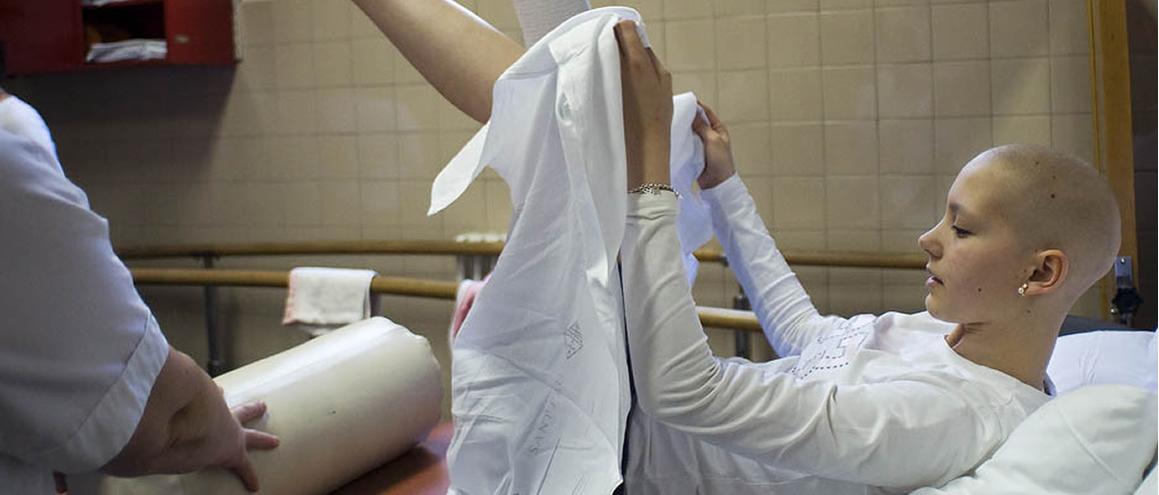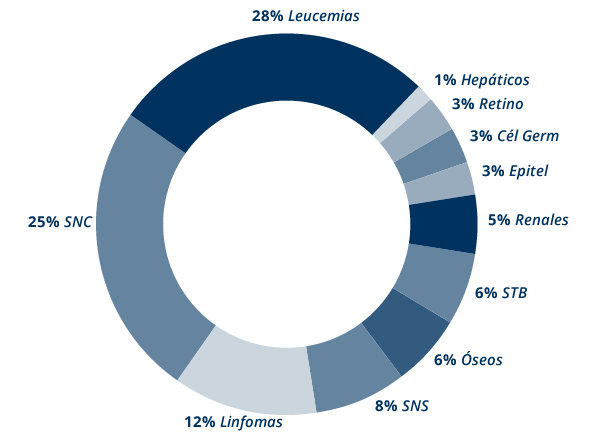Child cancer
The word cancer includes several diseases characterized by the presence of abnormal cells that divide and grow uncontrolled in any part of the body.
Normal cells divide, are different according to the tissues of the human body and die over a given period, but cancer cells divide without limit, multiply and form "tumors" or "neoplasms". When these grow, they penetrate and destroy normal tissue.
When a normal cell develops DNA alterations (mutations) that it cannot repair itself, it activates its own death program (apoptosi). But a cancer cell presents mutations that cannot be repaired and it does not activate the rejection or death cell mechanism, so it multiplies without any kind of control.
Some cancers may not form tumors, as in the case of blood and leukemia. Also, not all tumors are cancerous; they grow slowly, do not expand or penetrate surrounding tissues and are considered as "benign" (non-cancerous).
The mechanisms which facilitate the genetic alteration that triggers the beginning of cancer are complex and not always well-known. There are environmental, physical, chemical or biological factors that may induce cell lesions.
The incidence of the different kinds of neoplasm diseases varies according to age.
In our country the most frequent ones are leukemias (28%), brain tumors (25%) and lymphomas (12%).
RETI-SEHOP. Present incidence of child cancer in Catalonia (0-14 years of age)
Incidence rate: 160 per million children
Present annual number of new cases: 164
In the last decades, progress in diagnosis and treatment of neoplasm diseases in childhood has meant a significant improvement in the number of survivals.
However, cancer is still the second most common cause of death in people under 15 years of age, only preceded by accidents.
At present we can talk about a healing rate of 80% of child cancer, mostly when diagnosed in the early stages of the disease.
RETI-SEHOP. Survival rate 5 years after diagnosis of infantile tumors in Catalonia (0-14 years of age). Evolution from 1980 to 2008.
The general scheme of action concerning a tumor is as follows:
Phase 1: Diagnosis
At this first phase is required a local body evaluation (where the tumour is located) and also a general body evaluation to be sure that the damage hasn't spread to other points of the body (metastasi). The diagnosis is with analytical and radiology tests.
Phase 2: Treatment
The actual treatment follow international protocols that include all the resources to treat each cancer type: surgery, radiotherapy, chemotherapy, bone marrow transplant, ...
Phase 3: Control of evolution
After an adequate treatment and a complete answer, the patient enters a monitoring phase or evolutionary control. The reason is that a neoplastic cell may have remained latent or dormant and might become active again, so more treatment would be necessary.
The first year after the treatment ends is the period of maximum incidence in relapse (tumour reactivation). It may well happen that a neoplasm cell has remained latent or dormant and it might become active again at any time.
For this reason the sick child is subject to frequent clinical, analytical and radiological controls. After the first year, the possibility of a relapse decreases and controls may be spread out, although they will continue for at least 5 years.
Survival rates in child cancer are issued 5 years after diagnosis, a period when it is safe to assume a disease-free continued survival.





